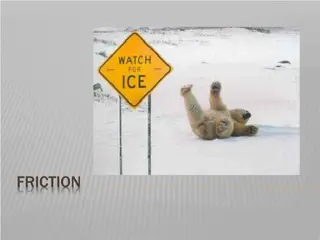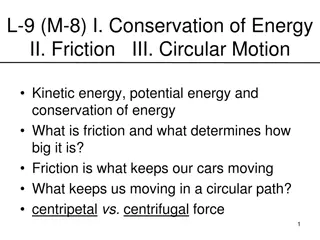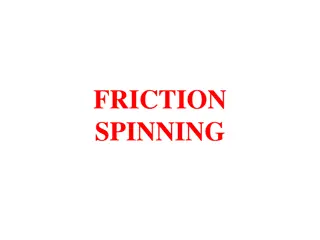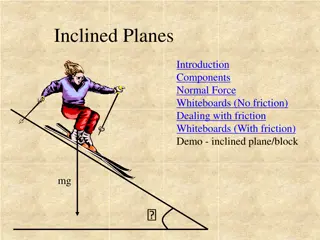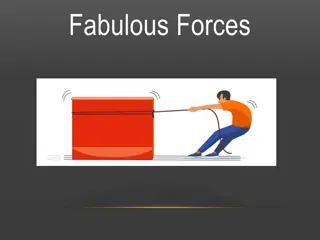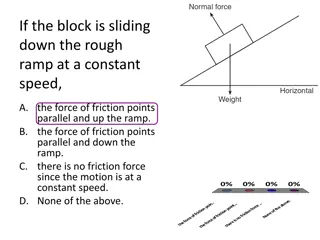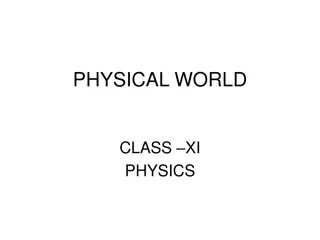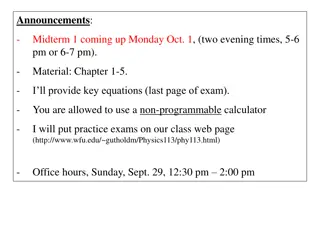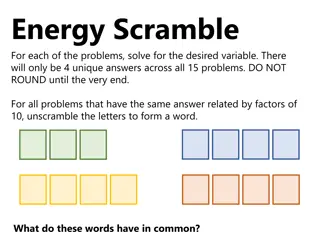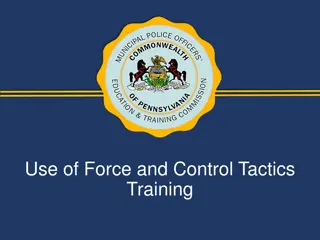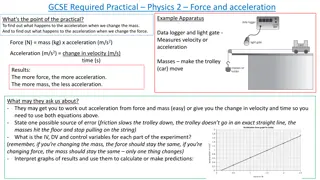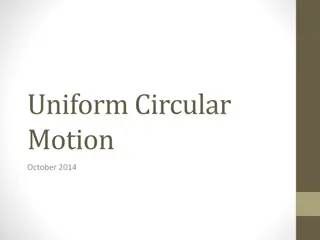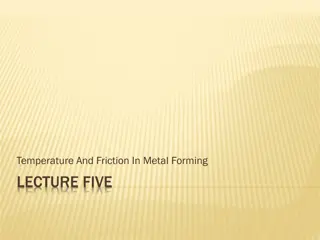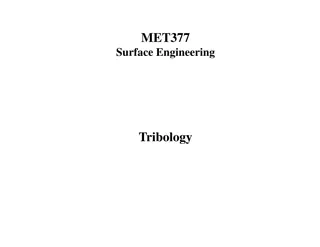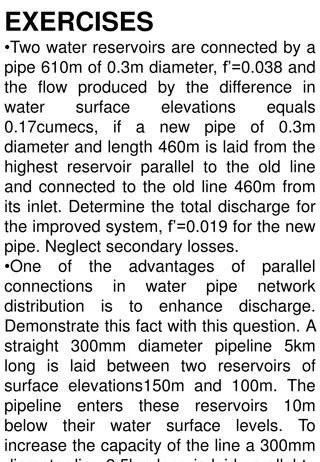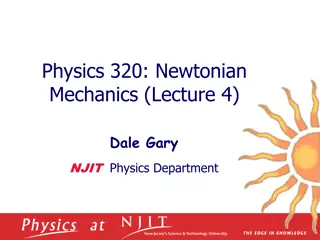Understanding Friction and Centripetal Force in Physics
Friction is the force that opposes the motion of objects, while centripetal force is essential for circular motion. Types of friction include static, sliding, rolling, and fluid friction. We calculate friction and centripetal force using specific formulas. Examples like walking and writing illustrate these concepts. Understanding these forces is crucial in various practical applications and physics problems.
Download Presentation

Please find below an Image/Link to download the presentation.
The content on the website is provided AS IS for your information and personal use only. It may not be sold, licensed, or shared on other websites without obtaining consent from the author. Download presentation by click this link. If you encounter any issues during the download, it is possible that the publisher has removed the file from their server.
E N D
Presentation Transcript
Friction and Centripetal Force OUTLINE; Define friction and centripetal force Examples of friction and centripetal force How do we calculate the friction and centripetal force? Types of friction Solving examples
Friction: The force that opposes the motion of moving object is called friction. OR Friction is a force between two surfaces that are sliding, or trying to slide, across each other. Friction always works in the direction opposite to the direction in which the object is moving, or trying to move. Friction always slows a moving object down.
Examples: Walking It is impossible to walk on the ground without friction. Friction is what holds your shoe to the ground. The friction present on the ice is very little, this is the reason why it is hard to walk on the slippery surface of the ice. Writing A frictional force is created when the tip of the pen comes in contact with the surface of the paper. Rolling friction is what comes into play while writing with a ballpoint pen while sliding friction arises when one writes with a pencil.
Representation of Friction: Friction is a force so its symbol is F and its SI unit is Newton (N). The symbol of the co-efficient of the friction is ( ). Where co-efficient of the friction is defined as the ratio of the force required to move tow sliding surfaces over each other, and the force holding them together. = FS/ R FS= R Where R=mg Hence: FS= mg
Types of friction: There are four types of friction. Static friction Sliding friction Rolling friction Fluid friction
Static Friction: Static friction acts on objects when they are resting on a surface. For example, if you are hiking in the woods, there is static friction between your shoes and the trail each time you put down your foot. Without this static friction, your feet would slip out from under you, making it difficult to walk. In fact, that's exactly what happens if you try to walk on ice. That's because ice is very slippery and offers very little friction.
Sliding Friction: Sliding friction is friction that acts on objects when they are sliding over a surface. Sliding friction is weaker than static friction. That's why it's easier to slide a piece of furniture over the floor after you start it moving than it is to get it moving in the first place. Sliding friction can be useful. For example, you use sliding friction when you write with a pencil. The pencil lead slides easily over the paper, but there's just enough friction between the pencil and paper to leave a mark.
Rolling Friction: Rolling friction is friction that acts on objects when they are rolling over a surface. Rolling friction is much weaker than sliding friction or static friction. This explains why most forms of ground transportation use wheels, including bicycles, cars, 4-wheelers, roller skates, scooters, and skateboards. Ball bearings are another use of rolling friction. They let parts of a wheel or other machine roll rather than slide over on another.
Fluid Friction: Fluid friction is friction that acts on objects that are moving through a fluid. A fluid is a substance that can flow and take the shape of its container. Fluids include liquids and gases. If you've ever tried to push your open hand through the water in a tub or pool, then you've experienced fluid friction. You can feel the resistance of the water against your hand. He's falling toward Earth with a parachute. Resistance of the air against the parachute slows his descent. The faster or larger a moving object is, the greater is the fluid friction resisting its motion. That's why there is greater air resistance against the parachute than the skydiver's body.
Advantages of friction: Friction enables us to walk freely. It helps to support ladder against wall. It becomes possible to transfer one form of energy to another. Objects can be piled up without slipping. Breaks of vehicles work due to friction. It always resists the motion, so extra energy is required to overcome it.
Disadvantages of Friction: It always resists the motion, so extra energy is required to overcome it. It causes wear and tear of machines. It decreases the life expectancy of moving parts of vehicles.
Example : How much is the force of friction between a wooden block of mass 5kg and the horizontal marble floor? The co-efficient of friction between wood and the marble is 0.6. Given data: mass of block= m= 5kg Co-efficient of friction= s = 0.6 Required: Force of friction= Fs=?
Cont. Solution: As we know that : Fs= s mg By putting the value, we have: Fs= 0.6 5 10 Fs= 30N
Centripetal Force: Definition: The force that is necessary to keep an object moving in a curved path and that is directed inward toward the center of rotation a string on the end of which a stone is whirled about exerts centripetal force on the stone compare centrifugal force. Or Centripetal force is a force that keeps a body to move in a circle.
Example: A few examples are the tension in the rope on a tether ball, the force of Earth's gravity on the Moon, friction between roller skates and a rink floor, a banked roadway's force on a car, and forces on the tube of a spinning centrifuge. Any net force causing uniform circular motion is called a centripetal force.
Representation and formula Centripetal force is a force so its symbol is Fc. Its formula: Fc= mv2/ r Fc = centripetal force m = mass v = velocity r = radius
Problem 1: How much centripetal force is needed to make a body of mass 0.5kg to move in circle of radius 50cm with a speed 3m/s? Given data: mass of a body = m = 0.5 kg Radius of circle = r= 50cm = 0.5 m speed of a body= v=3m/s Required: Centripetal force= Fc=?
Cont Solution: We know that Fc= mv2/ r By putting the value: Fc= 0.5 (3)2/ 0.5 Fc= 9N




